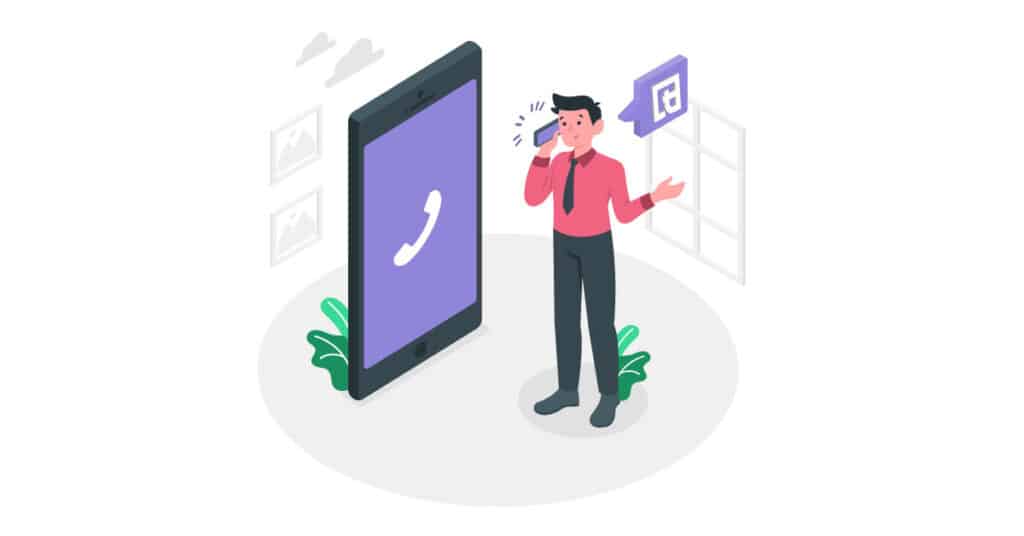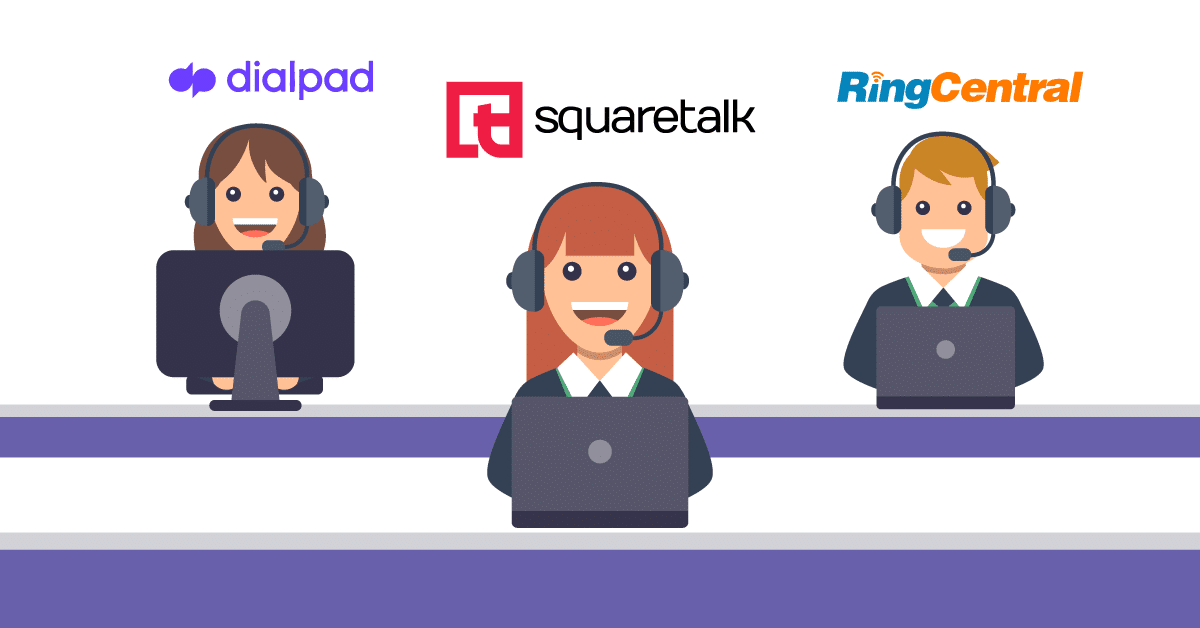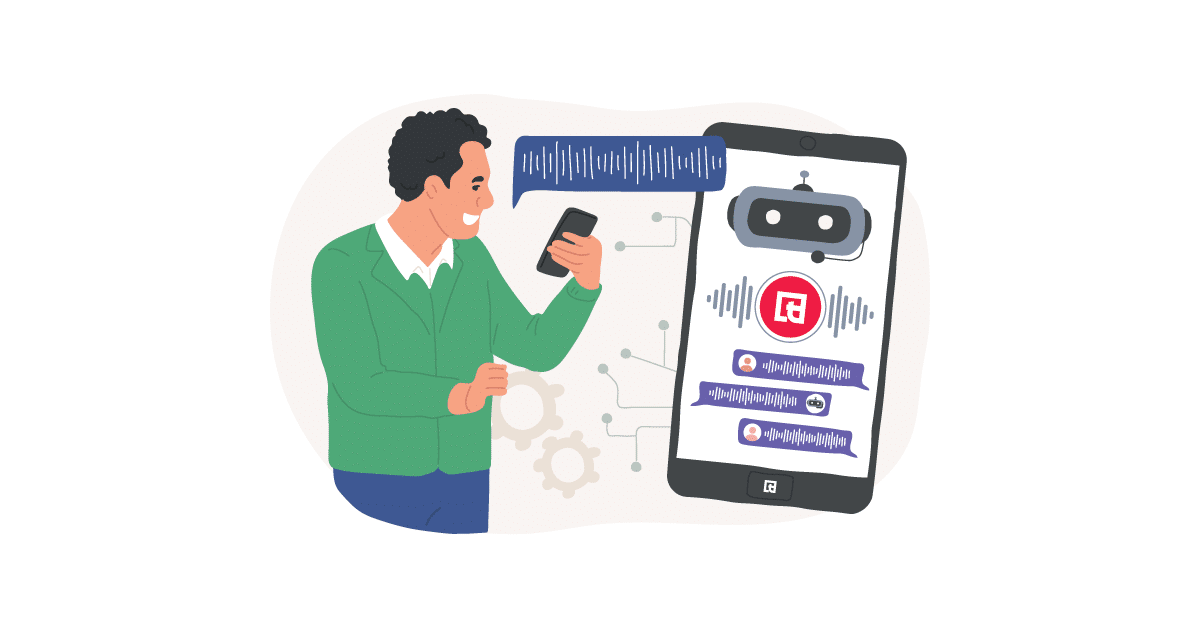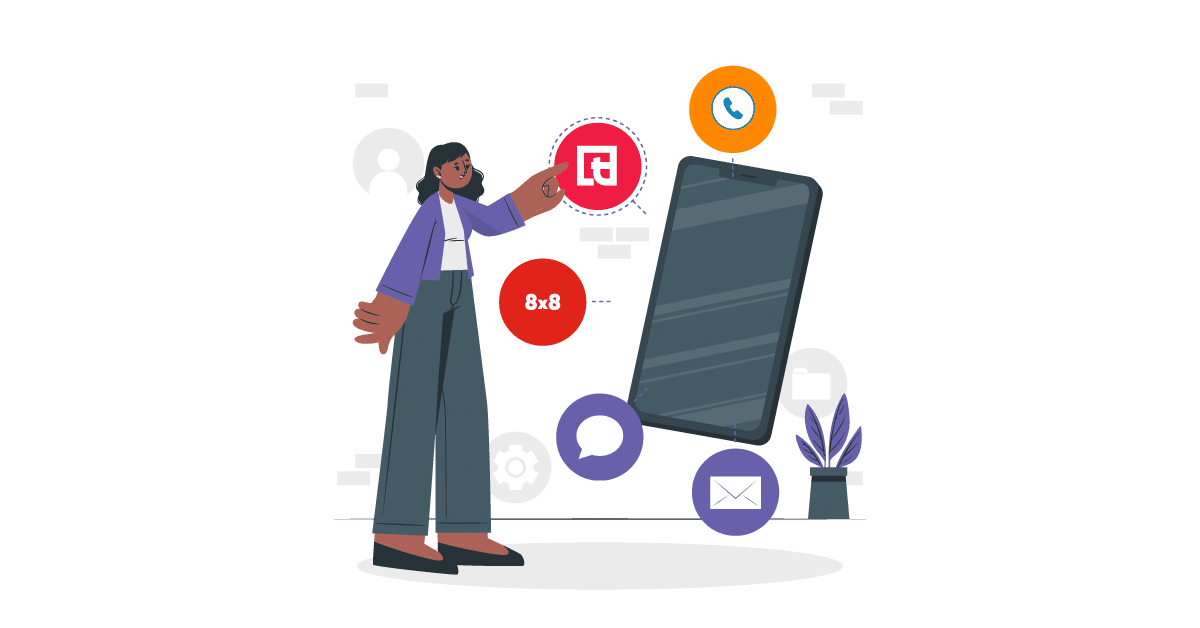Picture this: You spent 15 minutes on a detailed customer support call. You believe you’ve solved the caller’s problem. But a few days later, the caller reaches out again with the same issue.
How does this impact your call center?
High repeat call rates negatively impact customer satisfaction (CSAT), agent productivity, and overall operational costs.
They also reflect deeper process inefficiencies, product issues, or gaps in staff training.
In today’s article, you’ll learn about seven tried-and-tested strategies to reduce the likelihood of customers calling again for the same issue.
Implementing these strategies can lower costs, improve customer satisfaction and loyalty, and boost the overall performance of your call center.
Who Are Repeat Callers?
Repeat callers are people who reach out multiple times within a specific period.
Some call centers define a “repeat call” as any call from the same person within a set time frame, but this could be misleading. Most businesses consider it a repeat call only if it comes from the same customer on the same topic.
Certain call centers set different time windows for different services or products (e.g., 48 hours for transaction disputes vs 30 days for mortgage application queries in financial institutions) and don’t count some types of follow-up calls (e.g., scheduled medical device training, multi-step troubleshooting).
The main reasons for repeat calls are :
- Poor First Call Resolution (FCR)
- Inadequate Agent Knowledge or Training
- Complicated Workflows or Inefficient Processes
- Technical Issues or System Failures
- Miscommunication between Agents and Customers
- Long Hold Times or Disconnected Calls
- Customer Not Trusting the Initial Issue Resolution
- Inaccurate or Incomplete CRM Data
What Is Repeat Call Analysis and Its Importance
Repeat call analysis is a systematic approach to identifying the triggers that lead to multiple calls from the same customer about the same issue. It helps you see patterns, root causes, and opportunities for improvement.
Steps Involved in Repeat Call Analysis
1. Data Collection
Gather call records, CRM data, disposition codes, customer feedback, and agent notes within a set time frame. You want to know when the same customers called, the specific problems, and how each interaction concluded.
2. Categorization
Group repeat calls by issue type (billing, technical support, account inquiries, etc.) or product/service line. Segmenting data by customer demographics can show you which category has higher repeat call rates.
3. Root Cause Identification
Use AI to scan call transcripts for keywords indicating unresolved issues (e.g., “still not working,” “last time I called”). Determine why these calls keep happening. Post-call surveys can show if the customer felt the issue was fully resolved, while process flow analysis highlights which internal processes cause bottlenecks, like approval delays or system outages. Analyzing agent performance, on the other hand, can pinpoint call-handling patterns and training gaps that contribute to repeat interactions.
4. Action Planning
Based on your findings, decide how to fix the problems. This could mean updating your knowledge base, introducing new training modules, or enhancing your self-service options.
5. Monitoring and Adjustment
After implementing your action plan, continuously track KPIs and adapt strategies based on ongoing insights.
Why does repeat call analysis matter?
- Improved Customer Satisfaction : By identifying the root problems and fixing them, you create smoother customer journeys. Faster and better resolutions also mean shorter queues and less caller frustration.
- Reduced Operational Costs : Each repeat call forces you to pay for multiple interactions to solve one problem. Reducing them significantly lowers costs for staffing, technology, and support resources.
- Enhanced Agent Productivity : Repeat call analysis helps you eliminate unnecessary steps, equip agents with preemptive solutions for recurring issues, and free them up to deal with new customer inquiries. This results in lower average handle time, more calls handled per shift, and less pressure on the entire team.
- Higher First Call Resolution Rates : Repeat call analysis highlights patterns, bottlenecks, and inefficiencies that prevent issues from being resolved on the first attempt.
- Streamlined Internal Training and Processes : The data from repeat call analysis allows you to create focused and data-based training sessions. You can also detect the exact points where customers get stuck or processes fail (e.g., escalations, interdepartmental communication, gaps in data flow between CRM, ticketing systems, and knowledge bases.)
7 Expert-Recommended Strategies to Reduce Repeat Calls
Now that you understand repeat callers and why analysis is crucial, let’s move on to the core of this article.
Below, you’ll find seven proven strategies to minimize repeat calls.
They’re based on our service guidelines, case studies, discussions with experts, and the continuous development of our technology solutions.
1. Match the Caller with the Right Agent
You must connect customers to agents who can solve their issues quickly. This starts with understanding the reason for their call. Advanced call routing systems identify the caller’s needs and assign them to the agent with the most relevant skills.
Clear and tiered escalation paths, on the other hand, prevent customers from bouncing between departments.
Why does this work?
- Customers get connected to someone who understands their problem and has the knowledge and authority to resolve it.
- Agents handle inquiries for which they are trained, leading to faster resolutions.
- Customers have a better experience when they don’t have to wait for multiple transfers or repeat information to different agents.
- You reduce staff burnout by avoiding mismatched inquiries.
Squaretalk tip : Use prompts in the IVR that let the customer state their reason for calling. Then, direct them to the most suitable agent or department. This approach fosters immediate trust, optimizes resources, and reduces repeat calls.
2. Build a Comprehensive Self-Service Directory
88% of customers expect a business to offer an online self-service portal. People prefer to solve issues themselves instead of waiting on hold or repeatedly explaining the same problem.
By providing a well-organized self-service system, you empower customers to handle basic inquiries independently.
What does a self-service directory look like?
- FAQs on your website
- Automated chatbots with AI-driven answers
- Interactive Voice Response (IVR) systems
- Help pages with detailed troubleshooting guides
Squaretalk tip : Review your top support queries. Do most callers ask about order status, billing disputes, or returns? Turn these recurring questions into an FAQ or interactive solution guide. Make it intuitive so that people find what they need quickly. Then, test it yourself. Call your support number or interact with your chatbot. Spot any roadblocks and fix them immediately.
3. Analyze Calls to Determine Repeat Call Triggers
Call analysis is the best way to discover the deeper reasons for repeat interactions. AI-driven trigger analysis detects patterns (e.g., service disruptions and delayed deliveries) and allows you to fix common issues proactively, improve your product documentation or FAQs, and free your agents.
How to implement :
1. Collect feedback : Invite customers to rate their call experience or complete short surveys.
2. Use speech and sentiment analytics : Identify keywords, phrases, and tones that indicate customer frustration during the initial call.
3. Revamp your training : Use data and insights from repeat call analysis to create tailored coaching sessions on high-frequency issues.
4. Integrate with CRM Solutions
A Customer Relationship Management (CRM) platform captures relevant details about every interaction. It records the customer’s previous calls, open tickets, and ongoing concerns. Agents can access this information immediately, which significantly improves first-contact resolution.
Why does CRM integration matter?
- Agents see a comprehensive timeline of the customer’s history, preventing the need for repeated explanations.
- Personalized service and contextual recommendations build trust.
- Faster resolutions and fewer repeat calls reduce the burden on agents and encourage customer loyalty.
As Elie Rubin, Squaretalk’s founder and CEO, says, “CRM integration is a game-changer. You empower your agents to be proactive instead of reactive.”
5. Invest in Agent Training and Coaching
Better-prepared agents can handle a wider range of queries without escalations or follow-ups. They must handle complex problems, de-escalate, and follow through until each issue is resolved.
Focus areas for agent training :
- Technical knowledge : Agents should understand your product features, common issues, security, compliance, and troubleshooting protocols. Regular updates on new capabilities and policy changes ensure your staff is technically competent, reducing escalations and increasing FCR.
- Communication skills : Jargon-free, constructive language and empathetic tone put customers at ease and help them understand complex information. Agents need to set clear resolution expectations to manage difficult conversations and avoid unnecessary repeat calls.
- Problem-solving abilities : Critical thinking helps identify and address underlying issues and recognize recurring problem patterns. Agents have to know when to follow guidelines, when to adapt, and find solutions outside of standard procedures.
- Active listening : Understanding customer needs requires not just capturing what customers say but also why they’re saying it. Agents that spot frustrated tone, pace, and word choice usually reduce the risk of repeated interactions.
- Real-Live Examples : Train agents with role-playing scenarios, especially for complex cases that often result in repeat calls.
Also, read “7 Steps to Transform Customer Experience Through Effective Agent Training.”
6. Create a Centralized Knowledge System
Your agents need a single repository of updated information, including product documentation, troubleshooting steps, and the latest policies. A centralized knowledge base prevents agents from digging through scattered resources, boosting speed and accuracy.
What does this achieve?
- Agents quickly find up-to-date answers and complex problem resolutions broken down into manageable steps, which improves FCR and reduces AHT and frustration.
- Customers get consistent information and service quality.
- A centralized knowledge base is also a learning tool for new hires, speeding up onboarding and preventing early mistakes that result in repeat calls.
Squaretalk tip : Update your knowledge base. Whenever a new product feature or policy change occurs, have a process for revising the existing materials, including allowing agents to flag outdated or ineffective articles.
7. Proactive Communication
One of the most impactful strategies is catching potential issues before they turn into repeat calls.
How does Proactive Communication connect the dots?
- Predictive Analytics : Identify patterns (e.g., recurring product glitches or delayed shipments in certain areas) and potential high-risk cases based on historical and real-time data. Then, automatically route high-risk calls to specialized agents or send proactive notifications and solutions through your self-service channels before customers need to call back.
- Targeted Follow-Ups : Use triggers to send automated check-in messages at key points. For instance, ask the customer if the issue was resolved after a tech support call and provide relevant knowledge-based articles. This preemptive approach reduces repeat interactions and builds client trust and loyalty.
- CRM Tagging : Label customer profiles as “high repeat call risk” based on historical call patterns. Proactively reach out to them before similar situations occur or have the chance to escalate.
- Agent Training : Coach agents to spot repeat call risk factors during initial contacts. Encourage them to offer preemptive solutions or follow-up resources, so customers don’t have to call back multiple times.
- Knowledge Base Enhancements : Create special sections for “frequently called-back issues,” providing detailed step-by-step resolutions for your agents. This ensures they can easily access reliable information on the most common repeat triggers.
How Can Squaretalk Help Reduce Repeat Calls?
Squaretalk is new-age call center software that helps you manage and prevent repeat calls.
Unlimited Free Call Recording and Live Monitoring
You gain clarity on agent-customer interactions by reviewing call recordings and having a real-time overview of agent performance. This data helps you understand why repeat calls happen. You can identify communication gaps or confirm where agents need more training.
The spy, whisper, and barge features allow you to listen to ongoing conversations and assist your staff to increase FCR.
CRM Integration
We make it effortless to connect your CRM with our platform, no matter if you rely on industry leaders like Zoho, HubSpot, Freshworks, and Pipedrive or niche systems and custom solutions.
This VoIP-CRM integration centralizes all key customer information, including past interactions and open tickets. Agents instantly see the whole available data when they pick up a call, saving precious time and improving the likelihood of fast problem resolution.
Powerful Analytics and Reporting
We offer detailed analytics and advanced reporting tools that highlight patterns in your call data. You can use it to identify which issues trigger repeat calls most often and discover how your agents perform over time. You also uncover trends that let you fine-tune your training and resources.
Conclusion
Reducing repeat calls is a key ingredient for delivering outstanding customer experiences and optimizing call center performance.
Implementing the seven tried-and-true strategies (matching callers with the right agent, building intuitive self-service directories, analyzing call data, integrating CRMs, investing in targeted training, developing a comprehensive knowledge base, and communicating proactively) highlights inefficiencies and opportunities for improvement.
The result of reduced repeat calls? Higher FCR, lower churn, and greater overall efficiency.
As technologies evolve and customer expectations rise, relying on an advanced contact center solution like Squaretalk can significantly optimize your work, empower your team, and increase client satisfaction.
FAQ
What are the primary causes of repeat calls in a call center?
A: Common causes of repeat calls include:
- Incomplete Issue Resolution: Failing to address the customer’s problem fully during the initial call.
- Lack of Agent Knowledge: Agents not having the necessary information or training to resolve issues effectively.
- Poor Communication: Misunderstandings or unclear instructions leading to unresolved concerns.
- System or Process Failures: Technical issues or inefficient processes causing delays or errors.
How can skill-based call routing help reduce repeat customer interactions?
A: Skill-based routing directs calls to agents with the specific expertise required to handle particular issues, leading to:
- Higher first-call resolution rates.
- Reduced need for call transfers.
- Improved customer satisfaction due to efficient problem-solving.
What role does a centralized knowledge base play in minimizing repeat calls?
A: A centralized knowledge base provides agents with easy access to accurate and up-to-date information, enabling them to:
- Resolve issues more effectively during the first call.
- Maintain consistency in information provided to customers.
- Reduce the likelihood of misinformation leading to repeat calls.
How can proactive communication strategies prevent customers from calling back?
A: Proactive communication, such as follow-up messages or status updates, can:
- Keep customers informed about the progress of their issues.
- Address potential concerns before they escalate.
- Demonstrate commitment to customer service, reducing the need for repeat contact.






